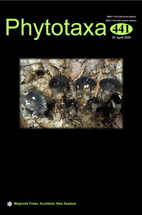Abstract
Lippia horridula is an endemic species from the Brazilian Cerrado with exclusively post-fire flowering records. It is often confused in herbaria collections with Lantana glaziovii and Lippia grandiflora, due to the subshrubby habit, the flowering branches raising from a well-developed xylopodium, and the pink colored corollas. Lippia horridula presents different morphotypes during its vegetative and flowering stages related to the fire regime in the Cerrado. The absence of observation and description of such variations has led to taxonomical confusion regarding its identity. Thus, in order to clarify this, we here present the morphological variation of this species during the vegetative and flowering stages, including modifications in the habit and remarkable heterophylly related to fire regime. An epitype is here designated to aid in the proper delimitation of this species. Moreover, a new record in the state of Maranhão (the northernmost known record for this species) is here presented, plus information about its conservation status, a geographical distribution map, in addition to a comparison with morphologically most similar species.

